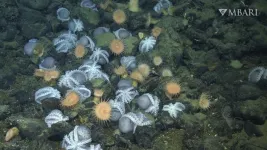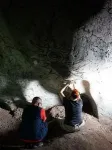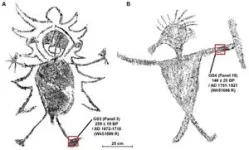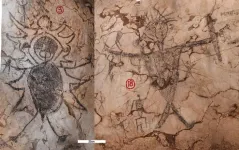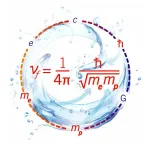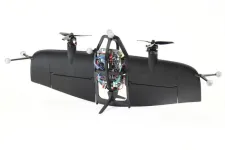(Press-News.org) In 2018, researchers from NOAA’s Monterey Bay National Marine Sanctuary and Nautilus Live observed thousands of octopus nesting on the deep seafloor off the Central California coast. The discovery of the “Octopus Garden” captured the curiosity of millions of people around the world, including MBARI scientists. For three years, MBARI and collaborators used high-tech tools to monitor the Octopus Garden and learn exactly why this site is so attractive for deep-sea octopus.
In a new study published today in Science Advances, a team of researchers from MBARI, NOAA's Monterey Bay National Marine Sanctuary, Moss Landing Marine Laboratories, the University of Alaska Fairbanks, the University of New Hampshire, and the Field Museum confirmed that deep-sea octopus migrate to the Octopus Garden to mate and nest. The Octopus Garden is one of a handful of known deep-sea octopus nurseries. At this nursery, warmth from deep-sea thermal springs accelerates the development of octopus eggs. Scientists believe the shorter brooding period increases a hatchling octopus’ odds for survival. The Octopus Garden is the largest known aggregation of octopus on the planet—researchers counted more than 6,000 octopus in a portion of the site and expect there may be 20,000 or more at this nursery.
“Thanks to MBARI’s advanced marine technology and our partnership with other local researchers, we were able to observe the Octopus Garden in tremendous detail, which helped us discover why so many deep-sea octopus gather there. These findings can help us understand and protect other unique deep-sea habitats from climate impacts and other threats,” said MBARI Senior Scientist Jim Barry, lead author of the new study.
The Octopus Garden is located 3,200 meters (10,500 feet, or about two miles) below the ocean's surface on a small hill near the base of Davidson Seamount, an extinct underwater volcano 130 kilometers (80 miles) southwest of Monterey, California. The site is full of Muusoctopus robustus—a species MBARI researchers nicknamed the pearl octopus because from a distance, nesting individuals look like opalescent pearls on the seafloor.
Over the course of 14 dives with MBARI’s remotely operated vehicle (ROV) Doc Ricketts, the research team learned why such large numbers of pearl octopus are attracted to this location. The presence of adult male and female octopus, developing eggs, and octopus hatchlings indicated that the site is used exclusively for reproduction. The team did not observe any intermediate-sized individuals or any evidence of feeding. Pearl octopus gather at this site solely to mate and nest.
When researchers from NOAA and Nautilus Live first discovered the Octopus Garden, they observed “shimmering” waters. This phenomenon occurs when warm and cool waters mix, suggesting the region had previously unknown thermal springs. Further investigation by MBARI researchers and their collaborators confirmed octopus nests are clustered in crevices bathed by hydrothermal springs where warmer waters flow from the seafloor.
The ambient water temperature at 3,200 meters (10,500 feet) deep is 1.6 degrees Celsius (about 35 degrees Fahrenheit). However, the water temperature within the cracks and crevices at the Octopus Garden reaches nearly 11 degrees Celsius (about 51 degrees Fahrenheit).
Octopuses are ectotherms, or cold-blooded animals. The frigid temperatures of the deep sea slow their metabolism as well as their rate of embryonic development. Most deep-sea octopuses have very long incubation periods compared to their relatives inhabiting warmer shallow seas. Past experiments have measured egg incubation time for a number of octopus species in habitats and locations around the world. Comparing those egg incubation times clearly demonstrates how temperature affects the rate of embryo development—the colder the water, the slower the embryos grow.
At the near-freezing temperatures of the abyss, researchers expected pearl octopus eggs to take five to eight years, if not longer, to hatch. A 4K camera on MBARI’s ROV Doc Ricketts provided a close-up look at nesting mothers. MBARI researchers and their collaborators used the scars and other distinguishing features of individual octopus moms to monitor the development of their broods. Surprisingly, the eggs hatched in less than two years. Warmth from thermal springs increased the metabolism of female octopus and their broods, reducing the time required for incubation.
Researchers believe the shorter brood period in warmer waters greatly reduces the risk that developing octopus embryos will be injured or eaten by predators. Nesting in warmer water boosts the reproductive success of the pearl octopus, better ensuring the offspring’s survival.
“The deep sea is one of the most challenging environments on Earth, yet animals have evolved clever ways to cope with frigid temperatures, perpetual darkness, and extreme pressure. Very long brooding periods increase the likelihood that a mother’s eggs won’t survive. By nesting at hydrothermal springs, octopus moms give their offspring a leg up,” said Barry.
The massive number of octopus in one area attracts both predators and scavengers. Like most other cephalopods, pearl octopus die after they reproduce. Dead octopus at the Octopus Garden provide a feast for scavengers. A rich community of invertebrates lives alongside the nesting females, undoubtedly benefiting from unhatched eggs, vulnerable hatchlings, or adult octopus that have died.
Davidson Seamount and its Octopus Garden are protected as part of Monterey Bay National Marine Sanctuary. Previous MBARI expeditions to Davidson Seamount in 2002 and 2006 revealed the stunning community of life on its rocky slopes. MBARI’s images and video of beautiful deep-sea corals, vibrant sponges, and curious fishes engaged and inspired audiences worldwide. Ocean champions spoke up to protect this unique, and still untouched, ocean wilderness. In 2008, resource managers expanded the Monterey Bay National Marine Sanctuary to include Davidson Seamount.
“Essential biological hotspots like this deep-sea nursery need to be protected,” said Barry. “Climate change, fishing, and mining threaten the deep sea. Protecting the unique environments where deep-sea animals gather to feed or reproduce is critical, and MBARI’s research is providing the information that resource managers need for decision-making.”
This work is funded as part of the David and Lucile Packard Foundation’s long-term support of MBARI’s ocean research and technology.
Background
For more than two decades, researchers from MBARI and NOAA have collaborated to study Davidson Seamount. Since the first expedition to the seamount in 2002, NOAA has leveraged MBARI expertise in marine geology and benthic biology and ecology to develop a comprehensive research program that aims to understand the unique community of life on and around Davidson Seamount. Now, Davidson Seamount is considered one of the best-studied and well-protected seamounts in the world.
In October 2018, a team of researchers from NOAA, the Ocean Exploration Trust, and collaborators made an expedition to Davidson Seamount aboard the E/V Nautilus. At the suggestion of MBARI geologists and NOAA researchers, the Nautilus Live team decided to expand their exploration from the top of the seamount to its surrounding foothills. The researchers discovered thousands of octopus aggregated around a rocky ridge adjacent to the towering seamount.
Most of the octopus were oriented upside down, inverting their arms and folding them around their bodies. This posture was an indication of pearl octopus (Muusoctopus robustus) mothers protecting, or brooding, their eggs. The pearl octopus is a pale purple species about the size of a grapefruit that occurs in the northeastern Pacific Ocean from Oregon to Baja California. MBARI has observed this species at depths of 2,300 to 3,600 meters (7,500 to 11,800 feet).
MBARI researchers and their collaborators deployed a suite of advanced scientific instruments developed by MBARI engineers to better understand the Octopus Garden.
“The expertise of the MBARI team—the engineers, pilots of our submersible vehicles, and crew of our research vessels—was integral to studying this hotspot of life two miles below the surface. We leveraged decades of experience in deep-sea exploration to develop and deploy instruments to study the Octopus Garden without disturbing the nesting mothers,” said Barry.
MBARI’s ROV Doc Ricketts recorded high-definition and 4K video of the brooding pearl octopus and their neighbors. MBARI’s skilled submersible pilots maneuvered the ROV close to brooding pearl octopus to deploy instruments to measure the environmental conditions within their nests, including temperature and oxygen levels, and to film mothers and their eggs up close in ultra-high definition resolution. A stereoscopic camera allowed MBARI engineers to visualize sites within the Octopus Garden in 3D. The team also launched one of MBARI’s autonomous underwater vehicles to map the Octopus Garden at meter-scale resolution.
MBARI engineers outfitted the ROV Doc Ricketts with an innovative, custom-built sensor suite, the Low-Altitude Survey System (LASS), to see the Octopus Garden in even greater detail.
The LASS gathered detailed bathymetry information to help researchers characterize the seafloor habitat at centimeter-scale resolution. The LASS also took high-resolution photographs of the Octopus Garden. Researchers assembled these photographs into a photomosaic to count the number of nests within this deep-sea nursery. They documented 5,718 octopus within a 2.5-hectare (6.2-acre) area at the center of the Octopus Garden. The team estimated the total population of the 333-hectare (823-acre) hillock could easily exceed 20,000 individuals.
A time-lapse camera collected long-term observations of the octopus’ behavior and changes in the community over a period of more than six months, allowing researchers to keep watch on the octopus nursery between research expeditions. The camera recorded an image every 20 minutes and amassed a trove of more than 12,200 images from March 2022 to August 2022. These photographs revealed various activities and behaviors of octopus, their predators, and local scavengers.
Both male and female pearl octopus migrate to the Octopus Garden. Females search for a warm nesting spot to deposit a clutch of approximately 60 elongate, sausage-shaped eggs. When brooding, mothers cover their eggs with their body and protect them from predators that creep too close. She lives off food reserves from her own tissues while tending to her developing eggs.
The transformation from egg to hatchling is not easy. In addition to going through development successfully, embryos must avoid injury, predation, infection, and other external sources of mortality. Maternal care protects them from most external risks, but a shorter brooding period generally allows more eggs to survive.
As is typical of cephalopods, male and female pearl octopus die after reproducing—the Octopus Garden will be their final resting spot. Most females live until their eggs have hatched. Sometimes, however, a mother octopus runs out of energy and dies before her eggs complete their development, exposing the developing eggs to greater risk.
The time-lapse camera revealed that nesting mothers push aside the carcasses of dead octopus. Food is scarce in the deep sea and nothing goes to waste. Larger scavengers like rattail fishes (family Macrouridae), cusk eels (family Ophidiidae), whelks, and sea anemones feast on octopus remains. Near Davidson Seamount, life on the deep seafloor depends on the rain of organic matter from above. Researchers estimated the turnover of male octopus and nesting females to calculate how much nutrition this massive aggregation provides. Biomass from dying octopus represents a substantial carbon subsidy to the local seafloor community, providing 72 percent more food than is available outside the Octopus Garden.
Many questions still remain about the Octopus Garden, including where pearl octopus go after hatching, how this octopus species became adapted to breeding in thermal springs, how adult octopus find the thermal springs, what advantage individuals breeding in these hydrothermal springs have over those that breed elsewhere, and how common hydrothermal springs are in the deep sea.
The deep sea is not immune to threats like fishing, pollution, and climate change. By documenting deep-sea biodiversity and identifying hotspots of life on the ocean floor, scientists are gathering important information that resource managers can use to guide protections for this unique environment and its inhabitants.
“Technological advances in our ability to study the ocean have helped us discover and document incredible biodiversity across an array of deep-sea environments. As the imprint of human activities reaches deeper into ocean ecosystems, we need to protect not only the octopus nurseries found off California and Costa Rica, but also the many other biological treasures that remain undiscovered,” emphasized Barry.
Deep-sea octopus nurseries: A new field of exploration
Researchers have documented four deep-sea octopus nurseries to date—two off the coast of Central California and two off the coast of Costa Rica—and are continuing to study these sites to learn more about octopus behavior.
December 2013: Discovery of first octopus nursery at Dorado Outcrop (Costa Rica)
Researchers from the University of Akron, the Field Museum, and the University of Alaska Fairbanks observed an aggregation of more than 100 octopus at the Dorado Outcrop, a hydrothermal spring located approximately 160 kilometers (100 miles) off the Pacific coast of Costa Rica at a depth of 3,000 meters (9,800 feet). The team identified the octopus as a potentially undescribed species of Muusoctopus. Nearly all of the individuals were in a brooding position, however, none of the eggs that researchers observed were viable.
April 2018: Researchers publish findings from the Dorado Outcrop (Costa Rica)
The team of researchers from the University of Akron, the Field Museum, and the University of Alaska Fairbanks published their observations of deep-sea octopus brooding unviable eggs at the Dorado Outcrop in Deep Sea Research Part I.
October 2018: Discovery of second octopus nursery at the Octopus Garden (Davidson Seamount, United States)
During a Nautilus Live expedition with the E/V Nautilus, researchers from NOAA’s Monterey Bay National Marine Sanctuary, the Ocean Exploration Trust, and collaborators observed a large aggregation of brooding octopus on a hillock approximately 12 kilometers (7.5 miles) southeast of Davidson Seamount at a depth of 3,200 meters (10,500 feet). Researchers identified the octopus as Muusoctopus robustus. A second visit by researchers from NOAA and the Woods Hole Oceanographic Institution (WHOI) in March 2019 confirmed the presence of warm hydrothermal springs at this site. The expedition team also confirmed that the octopus were brooding viable eggs and observed baby octopus hatching from the eggs.
April 2019: First MBARI expedition to Octopus Garden (Davidson Seamount, United States)
MBARI researchers made their first visit to the Octopus Garden as part of the 2019 Seafloor Ecology expedition. Along with collaborators, they visited the site 14 times with the R/V Western Flyer between April 2019 and August 2022. Additionally, MBARI researchers visited the Octopus Garden with the R/V Rachel Carson in February 2022 to launch a mapping autonomous underwater vehicle and create meter-scale maps of the site.
October 2019: Discovery of third octopus nursery at Octocone (Davidson Seamount, United States)
During a Nautilus Live expedition with the E/V Nautilus, researchers from NOAA, the Ocean Exploration Trust, and collaborators observed a second aggregation of brooding octopus on a volcanic cone to the east of Davidson Seamount. This site is approximately 17 kilometers (10.5 miles) northeast of the Octopus Garden. Researchers identified the octopus as Muusoctopus robustus. The octopus were confirmed to be brooding viable eggs.
June 2023: Discovery of fourth octopus nursery (Costa Rica)
During a Schmidt Ocean Institute expedition with the R/V Falkor (too), researchers from the Bigelow Laboratory for Ocean Sciences and the University of Costa Rica observed a previously unknown octopus nursery near an unexplored and still-unnamed seamount off the Pacific coast of Costa Rica. Upon returning to the nearby Dorado Outcrop, the team also observed octopus brooding viable eggs, confirming this location is indeed an active octopus nursery. Both Costa Rican nurseries host a potentially undescribed species of Muusoctopus.
August 2023: MBARI researchers publish findings from the Octopus Garden (Davidson Seamount, United States)
MBARI researchers and their collaborators from NOAA, Moss Landing Marine Laboratories, the University of Alaska Fairbanks, the University of New Hampshire, and the Field Museum published their research on brooding pearl octopus in Science Advances, confirming that deep-sea octopus migrate to the Octopus Garden to mate and nest.
About MBARI
MBARI (Monterey Bay Aquarium Research Institute) is a private non-profit oceanographic research center founded in 1987 by the late Silicon Valley innovator and philanthropist David Packard. MBARI’s mission is to advance marine science and technology to understand a changing ocean. Learn more at mbari.org.
END
Scientists solve mystery of why thousands of octopus migrate to deep-sea thermal springs
MBARI’s advanced technology offers new insight into the “Octopus Garden” off Central California, the largest aggregation of octopus on Earth.
2023-08-23
ELSE PRESS RELEASES FROM THIS DATE:
Malaysian rock art found to depict elite–Indigenous conflict
2023-08-23
A team of researchers led by the Griffith Centre for Social and Cultural Research in collaboration with The Sarawak Museum Department have become the first to date drawings of Gua Sireh Cave in Sarawak, uncovering a sad story of conflict in the process.
The limestone cave of Gua Sireh in western Sarawak (Malaysian Borneo) is famous for the hundreds of charcoal drawings lining the walls of its main chambers, attracting hundreds of visitors each year.
Approximately 55km southeast of Sarawak’s Capital, Kuching, the site is managed by the Bidayuh (local Indigenous peoples) in collaboration with The Sarawak Museum Department, ...
How a cup of water can unlock the secrets of our Universe
2023-08-23
Researchers from Queen Mary University of London have made a discovery that could change our understanding of the universe. In their study published in Science Advances, they reveal, for the first time, that there is a range in which fundamental constants can vary, allowing for the viscosity needed for life processes to occur within and between living cells. This is an important piece of the puzzle in determining where these constants come from and how they impact life as we know it.
In 2020, the same team found that the viscosity of liquids is determined by fundamental physical constants, setting a limit on how runny a ...
How neurons grow comfortable in their own skin
2023-08-23
Nerve cells that sense touch grow the appropriate endings for hairy or hairless skin based on cues from the skin itself, rather than through predetermined programming, according to research led by Harvard Medical School scientists and published Aug. 21 in Developmental Cell.
If affirmed in further studies, the findings could eventually help researchers develop therapies to regenerate damaged or diseased nerves, the authors say, or better understand what goes awry in congenital neuropathies, conditions in individuals born with ...
A better understanding of myalgic encephalomyelitis/chronic fatigue syndrome could benefit long COVID patients
2023-08-23
Amsterdam, August 23, 2023 – While myalgic encephalomyelitis/chronic fatigue syndrome (ME/CFS) and Long COVID are not the same disease, they appear to have features of overlapping biological and symptomatic presentations. Many people with Long COVID meet the diagnostic criteria of ME/CFS. Long COVID scientists and clinicians could expedite research and care protocols by utilizing information and experiences gained from the ME/CFS community. A special section of WORK: A Journal of Prevention, Assessment & Rehabilitation aims to provide a ...
Insights from fully sequencing 43 human Y chromosomes
2023-08-23
Highly challenging to sequence and long overlooked, the human Y chromosome’s contributions to health and disease remain largely unknown. A new paper that presents, for the first time, the complete sequences of multiple human Y chromosomes from lineages from around the globe provides an essential step forward in understanding the roles of the Y chromosome in human evolution and biology.
Even as the field of human genomics forged ahead at an astonishing pace, the Y chromosome— one of the ...
Interdisciplinary Lehigh University team awarded NSF grant to train future energy leaders
2023-08-23
A team of interdisciplinary researchers led by Arindam Banerjee, professor and chair of the Mechanical Engineering and Mechanics Department at Lehigh University, has been awarded nearly $3 million from the National Science Foundation to train a diverse group of future energy-sector leaders across academia, industry, government and policy organizations.
The five-year award will allow Lehigh to establish a SEED (Stakeholder Engaged, Equitable, Decarbonized) Energy Futures Training Program to provide graduate students with the skills needed to explore, collaborate and pioneer solutions to the society’s reliance on carbon-based energy sources and energy inequities. ...
Carnegie Mellon University announces new Director of the Language Technologies Institute
2023-08-23
Mona Diab understands what is at stake.
As a research scientist at two of the largest technology companies on the planet, Diab saw the impact innovations had as they spread across the globe. And with artificial intelligence poised to usher in the greatest technological leap since the internet, Diab wants to train, teach and prepare students, researchers, scientists and communities to think responsibly about these new tools.
"We're living in a world of proliferating AI and generative AI. There ...
Planning algorithm enables high-performance flight
2023-08-23
A tailsitter is a fixed-wing aircraft that takes off and lands vertically (it sits on its tail on the landing pad), and then tilts horizontally for forward flight. Faster and more efficient than quadcopter drones, these versatile aircraft can fly over a large area like an airplane but also hover like a helicopter, making them well-suited for tasks like search-and-rescue or parcel delivery.
MIT researchers have developed new algorithms for trajectory planning and control of a tailsitter that take advantage of the maneuverability and versatility of this type of aircraft. Their algorithms ...
Clinical trial studying possible new treatment option for patients with NAFLD
2023-08-23
According to the National Institutes of Health, approximately 24% of adults in the United States have nonalcoholic fatty liver disease (NAFLD), an umbrella term for a range of liver conditions affecting people who drink little to no alcohol that can lead to cirrhosis, liver cancer and liver failure.
Currently, there are no medications approved by the U.S. Food and Drug Administration (FDA) to treat NAFLD.
A recent $9.57 million grant awarded to researchers with the UC San Diego NAFLD Research Center at University of California San Diego School of Medicine will support a clinical trial to study a new treatment option for patients ...
National estimates of gender-affirming surgery
2023-08-23
About The Study: In this study of 48,000 patients, gender-affirming surgery increased significantly in the U.S., nearly tripling from 2016 to 2019. Breast and chest surgery was the most common class of procedures performed overall. The number of genital surgical procedures performed increased with increasing age.
Authors: Jason D. Wright, M.D., of the Columbia University College of Physicians and Surgeons in New York, is the corresponding author.
To access the embargoed study: Visit our For The Media website at this link https://media.jamanetwork.com/
(doi:10.1001/jamanetworkopen.2023.30348)
Editor’s ...
LAST 30 PRESS RELEASES:
Making lighter work of calculating fluid and heat flow
Normalizing blood sugar can halve heart attack risk
Lowering blood sugar cuts heart attack risk in people with prediabetes
Study links genetic variants to risk of blinding eye disease in premature infants
Non-opioid ‘pain sponge’ therapy halts cartilage degeneration and relieves chronic pain
AI can pick up cultural values by mimicking how kids learn
China’s ecological redlines offer fast track to 30 x 30 global conservation goal
Invisible indoor threats: emerging household contaminants and their growing risks to human health
Adding antibody treatment to chemo boosts outcomes for children with rare cancer
Germline pathogenic variants among women without a history of breast cancer
Tanning beds triple melanoma risk, potentially causing broad DNA damage
Unique bond identified as key to viral infection speed
Indoor tanning makes youthful skin much older on a genetic level
Mouse model sheds new light on the causes and potential solutions to human GI problems linked to muscular dystrophy
The Journal of Nuclear Medicine ahead-of-print tip sheet: December 12, 2025
Smarter tools for peering into the microscopic world
Applications open for funding to conduct research in the Kinsey Institute archives
Global measure underestimates the severity of food insecurity
Child survivors of critical illness are missing out on timely follow up care
Risk-based vs annual breast cancer screening / the WISDOM randomized clinical trial
University of Toronto launches Electric Vehicle Innovation Ontario to accelerate advanced EV technologies and build Canada’s innovation advantage
Early relapse predicts poor outcomes in aggressive blood cancer
American College of Lifestyle Medicine applauds two CMS models aligned with lifestyle medicine practice and reimbursement
Clinical trial finds cannabis use not a barrier to quitting nicotine vaping
Supplemental nutrition assistance program policies and food insecurity
Switching immune cells to “night mode” could limit damage after a heart attack, study suggests
URI-based Global RIghts Project report spotlights continued troubling trends in worldwide inhumane treatment
Neutrophils are less aggressive at night, explaining why nighttime heart attacks cause less damage than daytime events
Menopausal hormone therapy may not pose breast cancer risk for women with BRCA mutations
Mobile health tool may improve quality of life for adolescent and young adult breast cancer survivors
[Press-News.org] Scientists solve mystery of why thousands of octopus migrate to deep-sea thermal springsMBARI’s advanced technology offers new insight into the “Octopus Garden” off Central California, the largest aggregation of octopus on Earth.
